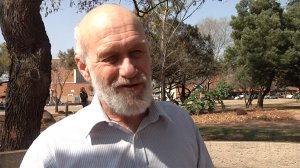PRETORIA (miningweekly.com) – More than 90% of South Africa’s seismic events were mining related, University of Pretoria natural hazard centre director Professor Andrzej Kijko said on Monday, noting, however, that this did not mean that all of these events were mining induced.
He stated that the 5.5 magnitude earthquake in North West earlier this month was possibly triggered by mining, although it was probably not mining induced, noting that mining induced earthquakes usually only had a magnitude of around 3.5.
Further, mining induced earthquakes were usually also not as widely felt as that of August 5.
However, Kijko explained that hundreds of years of mining did create a large amount of stress in the earth, which could act as a trigger and activate a pre-existing geological fault, which could lead to a natural earthquake.
University of the Witwatersrand and Council for Scientific and Industrial Research (CSIR) research chair in exploration, earthquakes and mining seismology Professor Ray Durrheim stated that, even without South Africa’s mining activities, the geological fault could still have slipped, but suggested that this would then occur less frequently.
He added that, while South Africa’s gold mining industry was slowing down, the frequency of seismic events was unlikely to slow in the near future.
“We know that nature takes a long time to react to these cracks and it will certainly continue for years, decades, maybe even centuries after mining stops,” he said.
Further, he pointed out that when mining stopped and the mine voids filled up with water, more pressure was put on geological fault lines that could trigger seismic events.
“So as the mines are allowed to flood in a controlled way, we will see a wave of seismicity taking place,” he explained.
MITIGATION
Following the 5.3 magnitude earthquake that struck the Klerksdorp area in March 2005, Durrheim, along with other researchers, presented a report to the Department of Mineral Resources on the risks posed by large seismic events to miners, mines, and the public in the gold mining districts of South Africa.
This report made various recommendations on what should be done to mitigate the impact of seismic events.
Durrheim told Mining Weekly Online on Monday that some of these recommendations had been implemented since 2006 when the report was delivered; however, there was still work to be done.
“Some of the recommendations have been put in place in terms of the Council for Geoscience now having [established] stations in the mining areas to monitor seismic activity as mines change hands and close down.
“[Further,] in 2006, disaster management structures in South Africa were still being established and, in some areas, they [hadn’t] included earthquakes as part of their planning. Now it seems they have started to do that. The response to this event on August 5 was quite speedy and competent,” Durrheim said.
However, he stated that there were still some issues around the quality of construction and the ability of structures to withstand the impact of earthquakes.
“It seems that some of the buildings that were damaged [in the August 5 quake] had not been constructed taking the possibility of earthquake shaking into account,” he noted.
Meanwhile, since the 2005 earthquake, new seismic codes had been promulgated, which was a positive development. However, Durrheim pointed out that rolling out these codes and ensuring that they were routinely implemented was still a challenge.
EMAIL THIS ARTICLE SAVE THIS ARTICLE
To subscribe email subscriptions@creamermedia.co.za or click here
To advertise email advertising@creamermedia.co.za or click here










